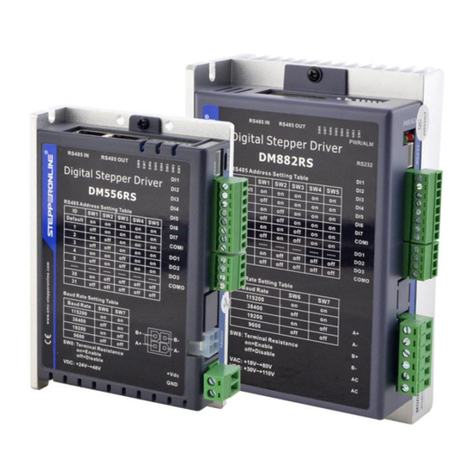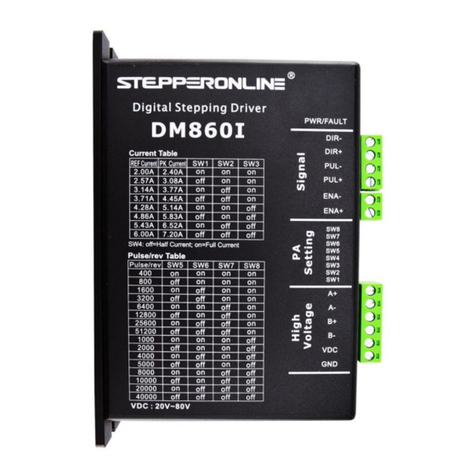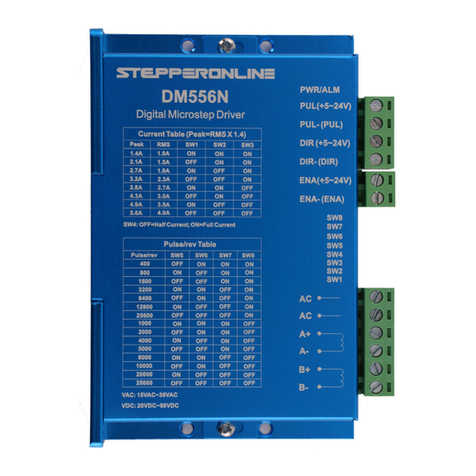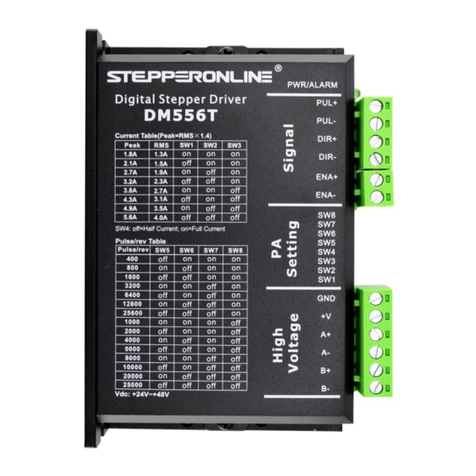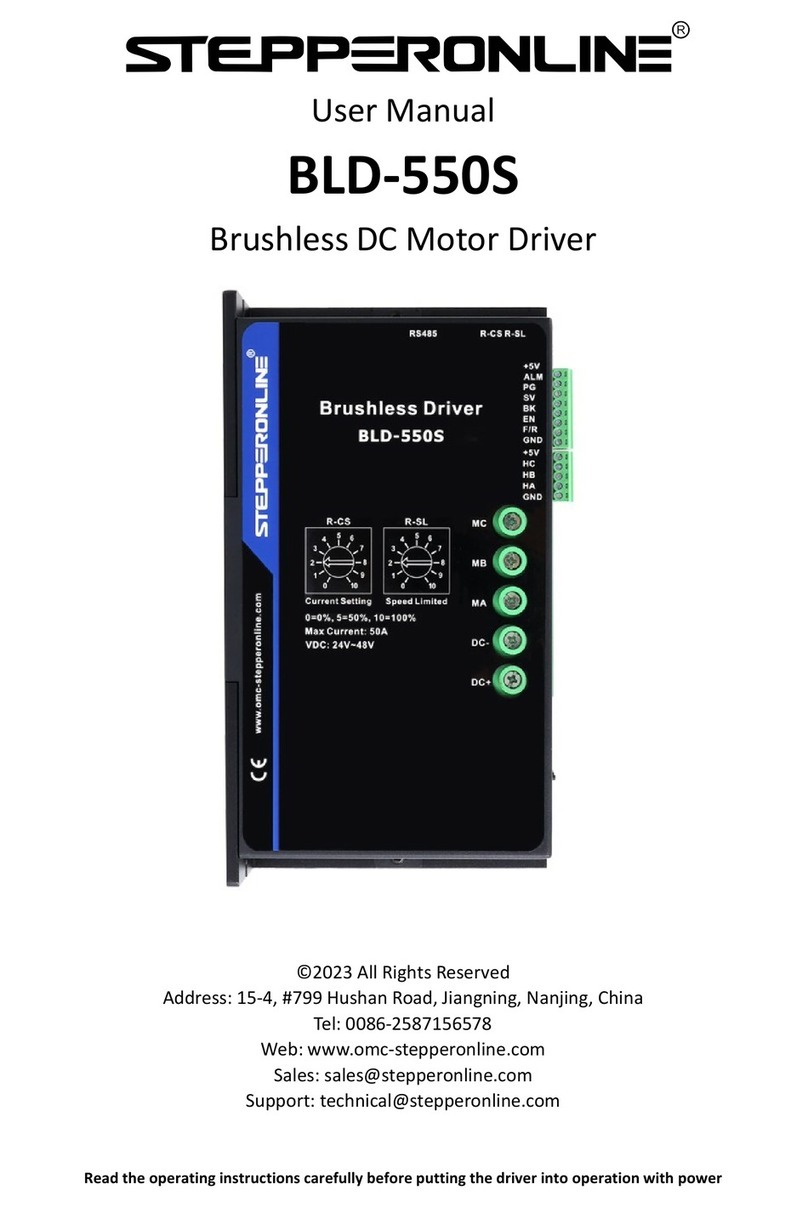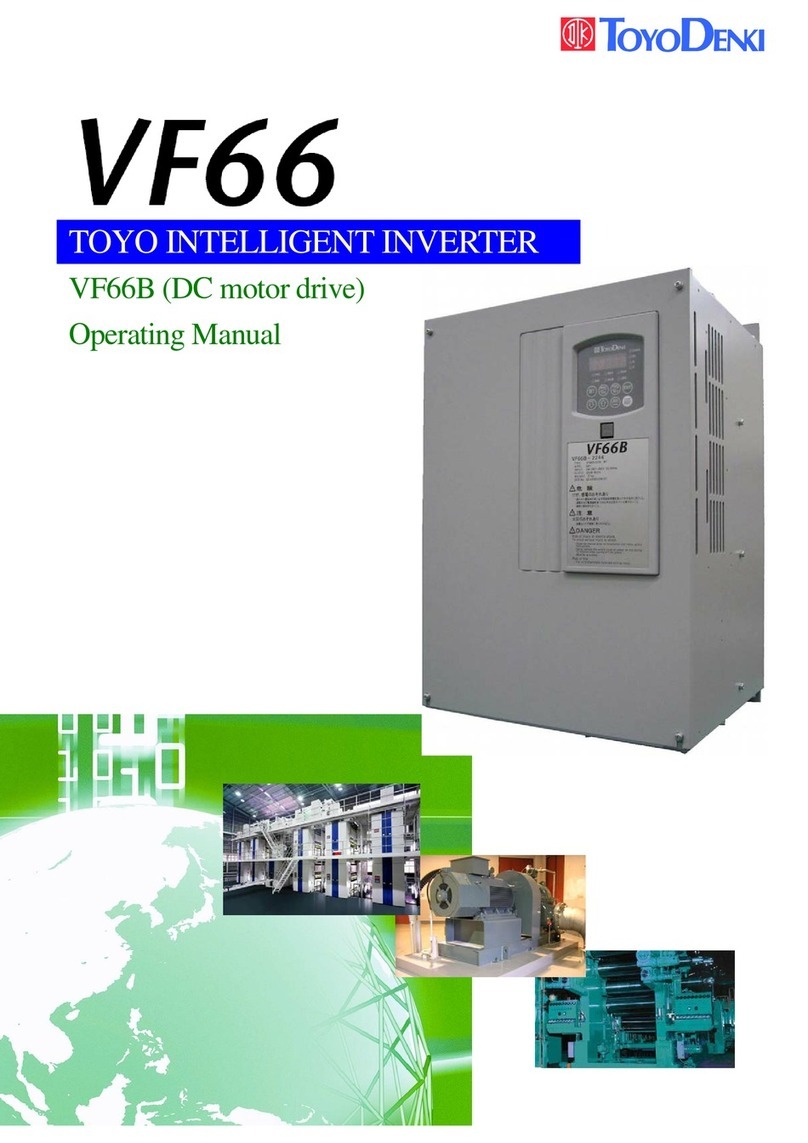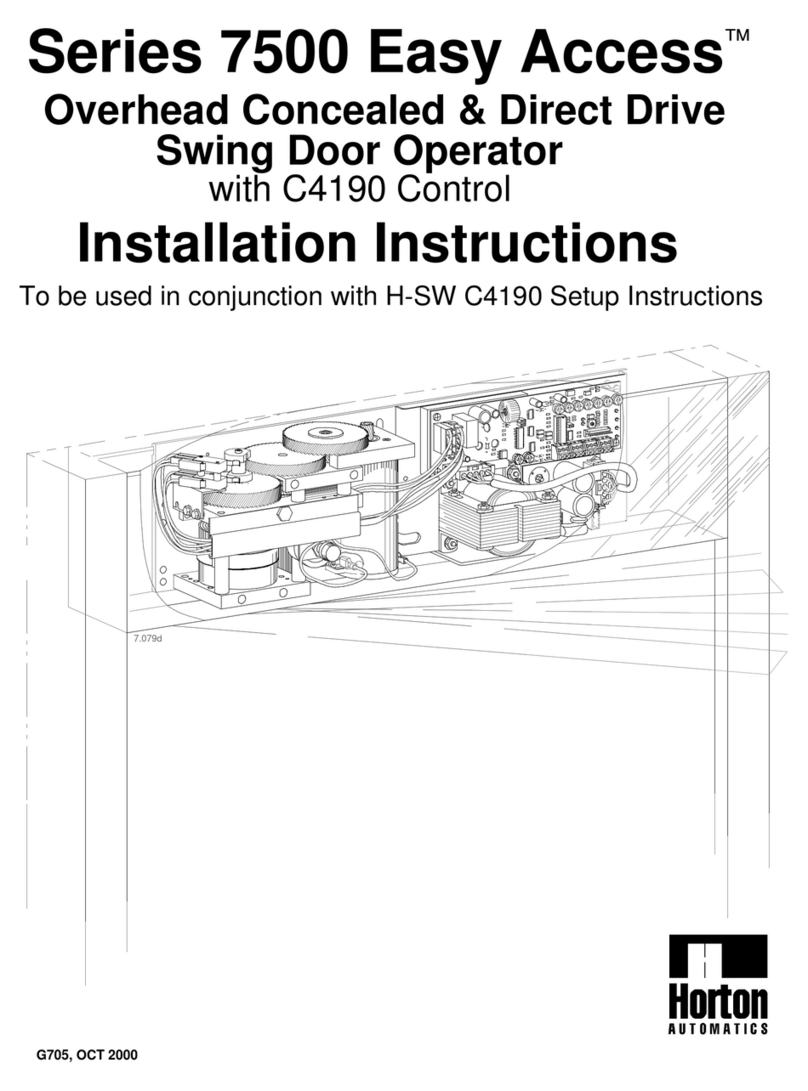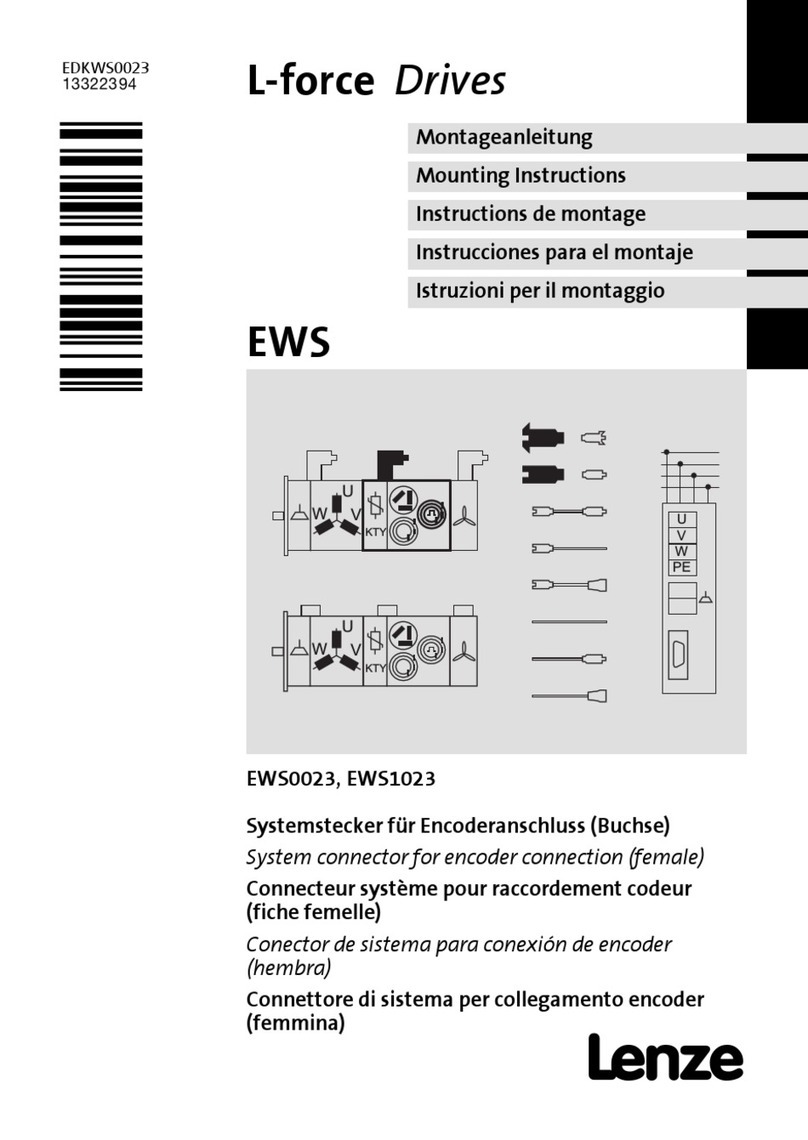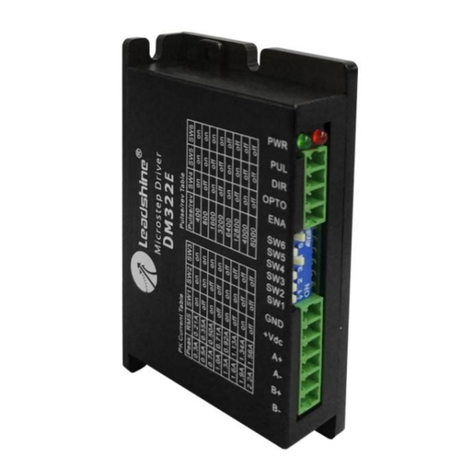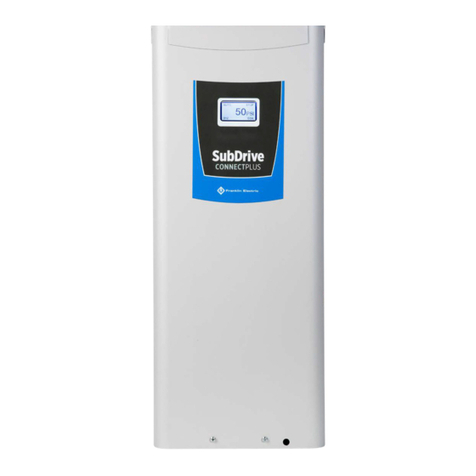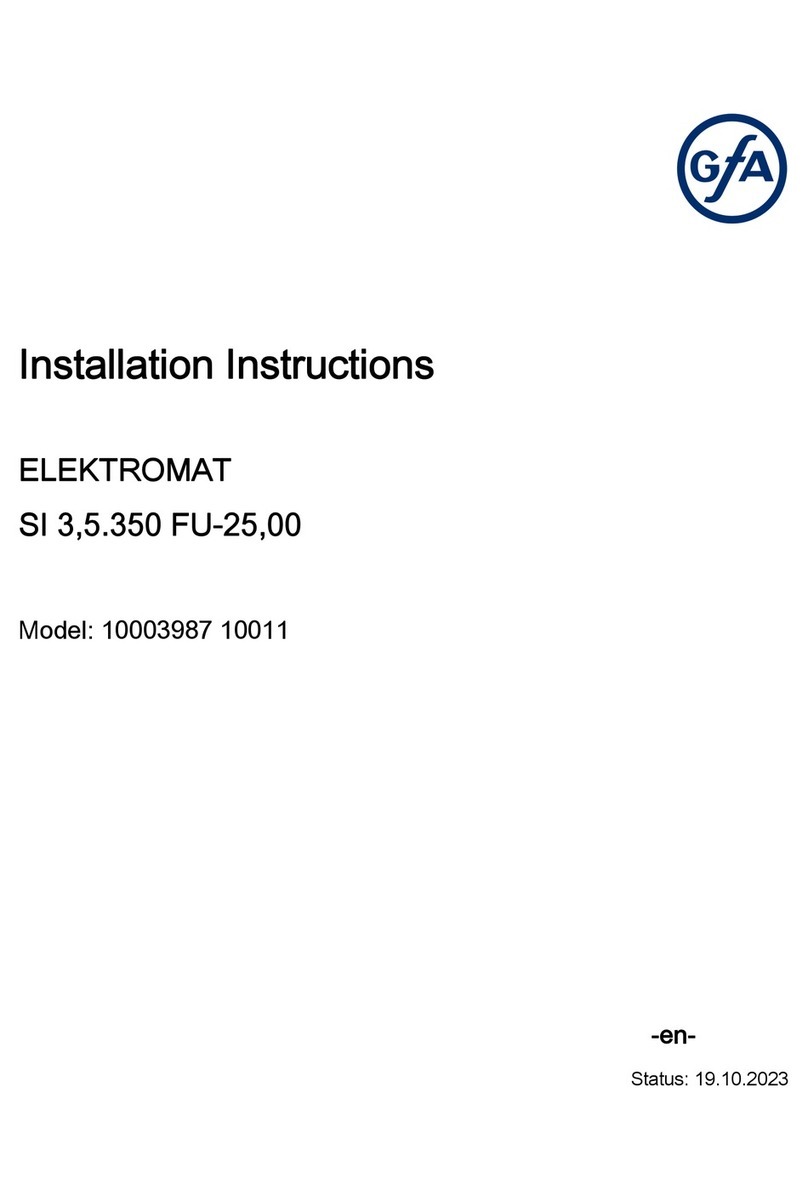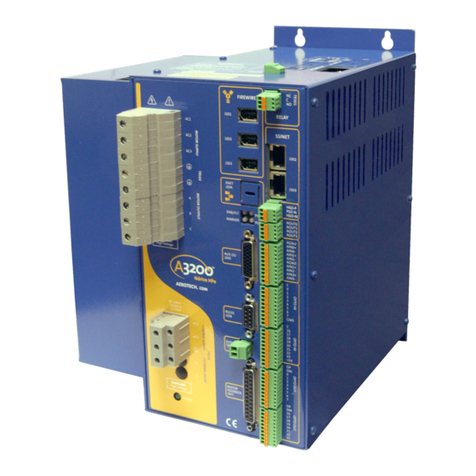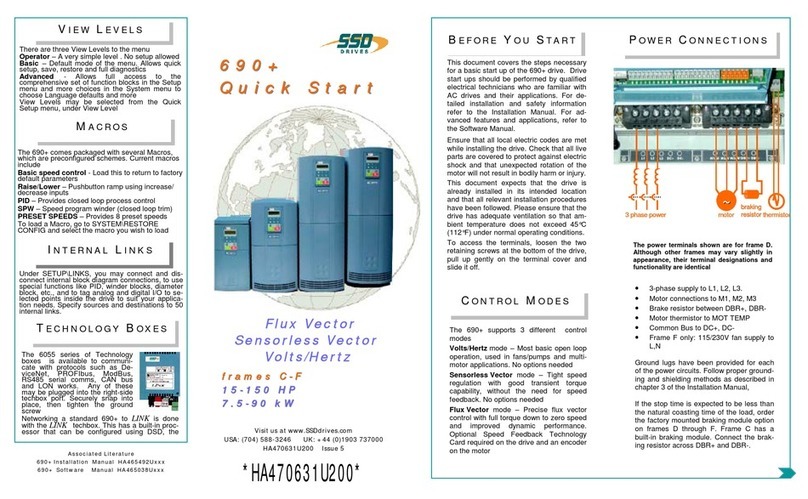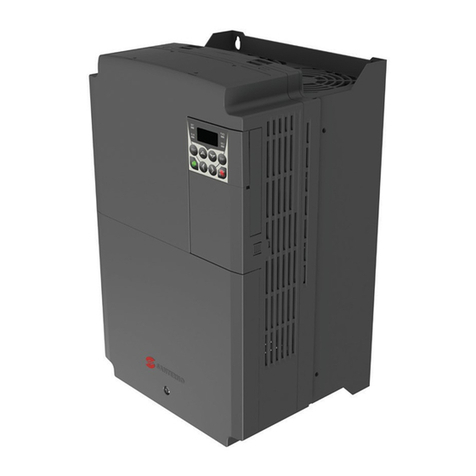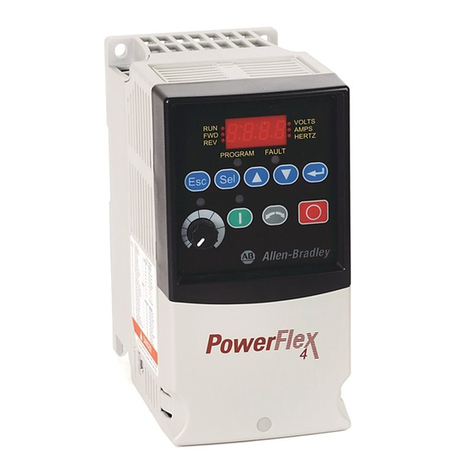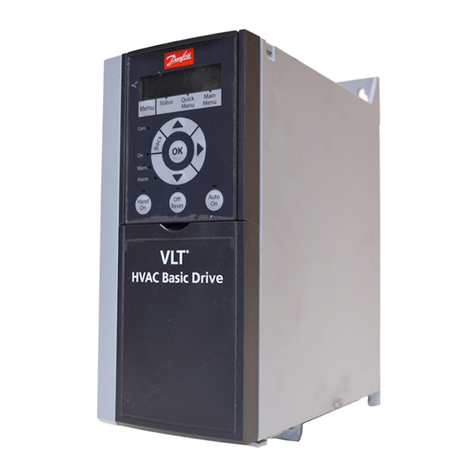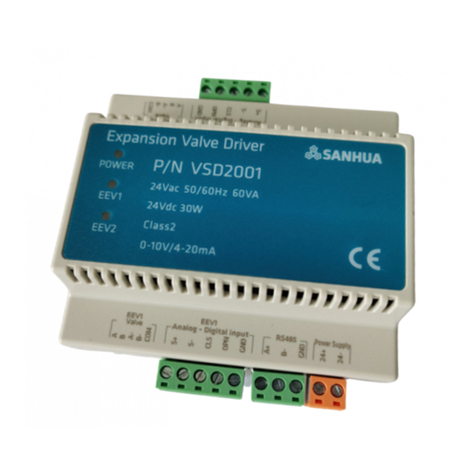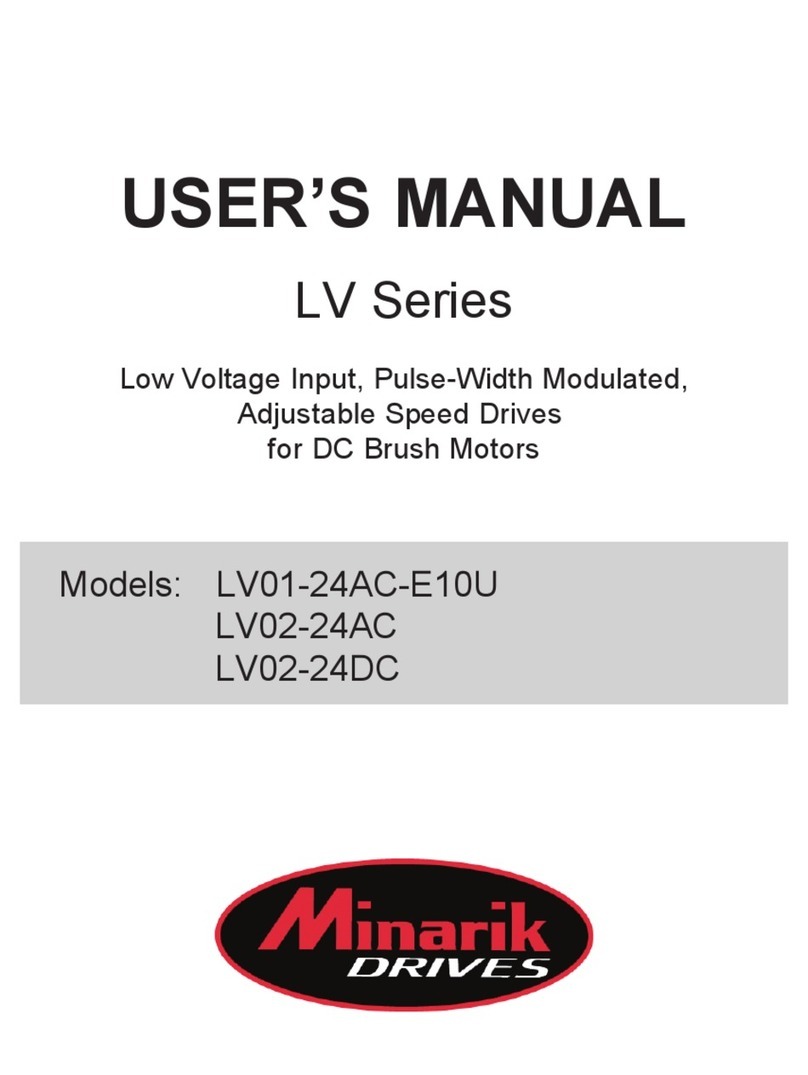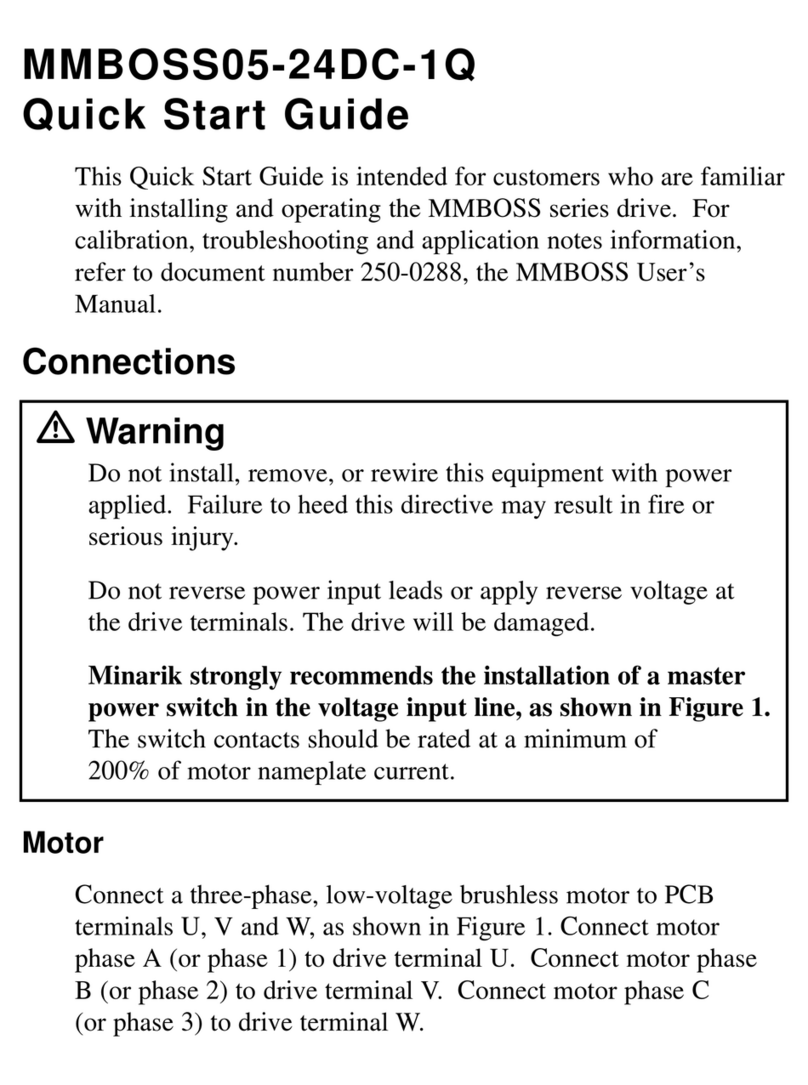StepperOnline CL57T User manual

CL57T(V3.0) Closed-loop Stepper Driver
Notice
Read this manual carefully before any assembling and using. Incorrect handling of products in this manual
can result in injury and damage to persons and machinery. Strictly adhere to the technical information
regarding installation requirements.
This manual is not for use or disclosure outsides of STEPPERONLINE except under permission. All rights
are reserved. No part of this manual shall be reproduced, stored in retrieval form, or transmitted by any
means, electronic, mechanical, photocopying, recording, or otherwise without approval from
STEPPERONLINE. While every precaution has been taken in the preparation of the
book,STEPPERONLINE assumes no responsibility for errors or omissions.
Neither is any liability assumed for damages resulting from the use of the information contained herein.
This document is proprietary information of STEPPERONLINE that is furnished for customer use ONLY.
Information in this document is subject to change without notice and does not represent a commitment on the
part of STEPPERONLINE. Therefore, information contained in this manual may be updated from time-to time
due to product improvements, etc., and may not conform in every respect to former issues.

CL57T(V3.0) Closed-loop Stepper Driver
Table of Contents
1. Introductions................................................................................................................................................................ 1
1.1 Features................................................................................................................................................................1
1.2 Applications.......................................................................................................................................................... 1
2. Specifications...............................................................................................................................................................1
2.1 Electrical Specifications..................................................................................................................................... 1
2.2 Environment......................................................................................................................................................... 1
2.3 Mechanical Specifications................................................................................................................................. 2
2.4 Elimination of Heat..............................................................................................................................................2
3. Connection Interface and LED Indication............................................................................................................ 2
3.1 Connector P1 Interface...................................................................................................................................... 3
3.1.1 Pin Assignments of P1............................................................................................................................3
3.1.2 Control Signal Wiring(P1).......................................................................................................................3
3.2 Connector P2....................................................................................................................................................... 4
3.2.1 Pin Assignments of P2............................................................................................................................4
3.2.2 Motor and Power Supply Wiring(P2)....................................................................................................4
3.3 Connector P3....................................................................................................................................................... 4
3.4 Connector P4....................................................................................................................................................... 5
3.5 LED Light Indication............................................................................................................................................5
4. Power Supply Selection............................................................................................................................................ 5
4.1 Regulated or Unregulated Power Supply....................................................................................................... 5
4.2 Power Supply Sharing........................................................................................................................................5
4.3 Selecting Supply Voltage................................................................................................................................... 6
5. DIP Switch Configurations....................................................................................................................................... 6
5.1 Microstep Resolution(SW1-SW4).................................................................................................................... 6
5.2 Other DIP Switch Setting(SW5-SW8)..............................................................................................................7
6. Typical Connection..................................................................................................................................................... 7
7. Sequence Chart of Control Signals....................................................................................................................... 8
8. Protection and Troubleshooting............................................................................................................................. 9
9. Warranty...................................................................................................................................................................... 10

CL57T(V3.0) Closed-loop Stepper Driver
1
1. Introductions
This Closed Loop Stepper Driver, offers an alternative for applications requiring higher performance and
higher reliability than open loop stepper system, and it remains cost-effective. The matched stepper motors
are NEMA17,23 and 24 combined with an internal encoder which is used to close the position, velocity and
current loops in real time.
1.1 Features
Input voltage 24-48VDC, output peak current 0-8.0A
Closed-loop, eliminates loss of synchronization
No Tuning and always stable
Do not need a high torque margin
Broader operating speed range
Reduced motor heating and more efficient
Smooth motion and super-low motor noise
Protections for over-voltage, over-current and position following error
1.2 Applications
Its great features of quicker response and no hunting make STEPPERONLINE’s closed loop stepper driver is
ideal for applications such as bonding and vision systems in which rapid motions with a short distance are
required and hunting would be a problem. And it is ideal for applications where the equipment uses a
belt-drive mechanism or otherwise has low rigidity and you don't want it to vibrate when stopping.
2. Specifications
2.1 Electrical Specifications
Parameters
CL57T
Min
Typical
Max
Unit
Output Current
0
-
8
A
Supply Voltage
24
36
48
VDC
Logic signal current
7
10
16
mA
Pulse input frequency
0
-
200
kHz
Minimal pulse width
2.5
-
-
μS
Minimal direction setup
5.0
-
-
μS
Isolation resistance
500
MΩ
2.2 Environment
Cooling
Natural Cooling or Forced cooling
Operating Environment
Environment
Avoid dust, oil fog and corrosive gases
Ambient Temperature
0°C -65°C (32°F - 149°F)
Humidity
40%RH-90%RH
Operating Temperature
0°C -50°C (32°F - 122°F)
Vibration
10-50Hz / 0.15mm
Storage Temperature
-20°C -65°C (-4°F - 149°F)
Weight
Approx. 280 g (9.9 oz)

CL57T(V3.0) Closed-loop Stepper Driver
2
2.3 Mechanical Specifications
(unit: mm [1inch=25.4mm])
Figure 1: Mechanical specifications
* Side mounting recommended for better heat dissipation
2.4 Elimination of Heat
CL57T reliable working temperature should be < 60℃(140°F)
It is recommended to mount the drive vertically to maximize heat sink area. Use forced cooling method
to cool if necessary.
3. Connection Interface and LED Indication
The CL57T has four connector blocks P1&P2&P3&P4 (see above picture). P1 is for control signals
connections, P2 is for power and motor connections, P3 is for encoder signals input connections, and P4 is
for connecting with PC tuning software. The following tables are brief descriptions of the four connectors.
More detailed descriptions of the pins and related issues are presented in section 4, 5, 9.

CL57T(V3.0) Closed-loop Stepper Driver
3
3.1 Connector P1 Interface
3.1.1 Pin Assignments of P1
Pin Name
I/O
Details
PUL+
I
Pulse signal:
(1) In single pulse (pulse & direction) control mode, this input represents pulse signal.
A pulse signal is active at the rising or falling voltage edge (set by DIP switch SW8).
(2) In double-pulse (CW/CCW) control mode (set by DIP switch SW7), this signal input
represents clockwise (CW) pulse, and is active at both high voltage level and low
voltage level.
(3) 4.5-5V for voltage HIGH, 0-0.5V for voltage LOW (same for DIR signals).
(4) Pulse width should be set to 2.5μs or longer.
PUL-
I
DIR+
I
Direction signal:
(1) .In single pulse (step & direction) control mode, this signal’s low and high voltage
levels represent the two directions of motor rotation (e.g. clockwise and
counterclockwise).
(2) In double-pulse (CW & CCW) control mode, this signal represents counterclockwise
(CCW) rotation. It is active at both voltage high level and low level.
(3) Minimal DIR signal setup time should be at least 5μs.
(4) You can reverse the default rotation direction by toggling the SW5 DIP switch.
DIR-
I
ENA+
I
Enable signal: This signal is used for enabling/disabling the drive. High voltage level of
4.5-24VDC (NPN control signal) for enabling the drive and low voltage level of
0-0.5VDC for disabling the drive. PNP and Differential control signals are on the
contrary, namely Low level for enabling. By default this signal is left UNCONNECTED
& ENABLED.
ENA-
I
ALM+
O
Configurable Digital Output Signal: A configurable OC output signal. It takes a sinking
or sourcing 20mA current at 5-24V. It can to be configured as one of the 3 types,
ALARM (default), IN POSITION, or BRAKE CONTROL through PC software.
ALM-
O
!
Notice
Notes: (1) shielding control signal wires is suggested;
(2) To avoid interference, don’t tie PUL/DIR control signal and motor wires together;
3.1.2 Control Signal Wiring(P1)
The CL57T can accept differential and single-ended inputs (including open-collector and PNP output). The
CL57T has 3 optically isolated logic inputs which are located on connector P1 to accept line drive control
signals. These inputs are isolated to minimize or eliminate electrical noises coupled with the drive control
signals. Recommend using line drive control signals to increase noise immunity for the drive in interference
environments. In the following figures, connections to open-collector and PNP signals are illustrated.

CL57T(V3.0) Closed-loop Stepper Driver
4
Figure 2: Connections to PNP signal Figure 3: Connections to open-collector signal
(common-cathode) (common-anode)
3.2 Connector P2
3.2.1 Pin Assignments of P2
Pin Name
Details
A+, A-
Motor Phase A connections. Connect motor A+ wire to A+ Pin; motor A- wire to A-
B+, B-
Motor Phase B connections. Connect motor B+ wire to B+ Pin; motor B- wire to B-
+Vdc
Power supply positive connection. Suggest 24-48VDC power supply voltage
GND
Power supply ground connection.
!
Warning
Warning: Don’t plug or unplug the P1 & P2 terminal block to avoid drive damage or injury when
CL57T is powered on.
3.2.2 Motor and Power Supply Wiring(P2)
The CL57T can drive NEMA17, 23 and 24 closed loop stepper motor with encoder resolution of 1000 ppr.
The current loop PID will be adjusted automatically regarding to function of motor auto-identification and
parameter auto-configuration, to output optimal torque from wide-range motors. However, the user can also
configure the current in the tuning software. The configurable parameters include motor peak current, closed
loop holding current, micro step and etc.
!
Warning
Warning: For NEMA17 closed loop motor, need to change the value of motor peak current from 80 to 30,
if not, it will burning the motor as too high current output.

CL57T(V3.0) Closed-loop Stepper Driver
5
3.3 Connector P3
Drive Pin Name
Description
EB+
Encoder B+ input
EB-
Encoder B- input
EA+
Encoder A+ input
VCC
+5V power output
EGND
Signal ground
3.4 Connector P4
It is a RS232 communication port using to connect with PC software to configure the motor peak current,
closed loop holding current, microstep, active level.
RS232 Communication Port – RJ11
Pin
Name
I/O
Description
1
NC
-
Not connected.
2
+5V
O
+5V power output.
3
TxD
O
RS232 transmit.
4
GND
GND
Ground.
5
RxD
I
RS232 receive.
6
NC
-
Not connected.
3.5 LED Light Indication
There are two LED lights for CL57T. The GREEN one is the power indicator which will be always on generally.
The RED one is a protection indicator which will flash 1,2 or 7 times in a 5-second period, when protection
enabled for a CL57T. Different number of flashes indicates different protection type (read section 8 for detail).
4. Power Supply Selection
The CL57T can power medium and small size closed loop stepper motors (frame size from NEMA17 to 34).
To get good driving performances, it is important to select supply voltage and output current(by configuring
motor peak current) properly. Generally speaking, supply voltage determines the high speed performance of
the motor, while output current determines the output torque of the driven motor (particularly at lower speed).
Higher supply voltage will allow higher motor speed to be achieved, at the price of more noise and heating. If
the motion speed requirement is low, it’s better to use lower supply voltage to decrease noise, heating and
improve reliability.
4.1 Regulated or Unregulated Power Supply
Both regulated and unregulated power supplies can be used to supply the driver. However, unregulated
power supplies are preferred due to their ability to withstand current surge and fast response for current
change. If you prefer to a regulated power supply, it is suggested to choose such a power supply specially
designed for stepper/servo controls Or, in the case when only normal switching power supplies are available,
it is important to use “OVERSIZE” high current output rating power supplies (for example, using a 4A power
supply for 3A stepper motor) to avoid problems such as cunt clamp. On the other hand, if unregulated supply
is used, one may use a power supply of lower current rating than that of motor (typically 50%~70% of motor
current). The reason is that the driver draws current from the power supply capacitor of the unregulated

CL57T(V3.0) Closed-loop Stepper Driver
6
supply only during the ON duration of the PWM cycle, but not during the OFF duration. Therefore, the
average current withdrawn from power supply is considerably less than motor current. For example, two 3A
motors can be well supplied by one power supply of 4A rating.
4.2 Power Supply Sharing
Multiple CL57T drivers can share one power supply to reduce cost, if that power supply has enough power
capacity. To avoid cross interference, connect each stepper drive directly to the shared power supply
separately. To avoid cross interference, DO NOT daisy-chain connect the power supply input pins of the
Drivers. Instead connect them to power supply separately.
4.3 Selecting Supply Voltage
The CL57T is designed to operate within +24 - +48VDC voltage input. When selecting a power supply,
besides voltage from the power supply power line voltage fluctuation and back EMF voltage generated
during motor deceleration needs also to be taken into account. Ideally it is suggested to use a power supply
with the output of +36VDC, leaving room for power line voltage fluctuation and back -EMF.
Higher supply voltage can increase motor torque at higher speeds, thus helpful for avoiding losing steps.
However, higher voltage may cause bigger motor vibration at lower speed, and it may also cause
over-voltage protection or even driver damage. Therefore, it is suggested to choose only sufficiently high
supply voltage for intended applications.
5. DIP Switch Configurations
This drive uses an 8-bit DIP switch to set microstep resolution, motor direction, auto tuning switch and so on.
5.1 Microstep Resolution(SW1-SW4)
Microstep resolution is set by SW1, 2, 3, 4 of the DIP switches as shown in the following table:
Steps/Revolution
SW1
SW2
SW3
SW4
Software Configured (Default 1600)
on
on
on
on
800
off
on
on
on
1600
on
off
on
on
3200
off
off
on
on
6400
on
on
off
on
12800
off
on
off
on
25600
on
off
off
on
51200
off
off
off
on
1000
on
on
on
off

CL57T(V3.0) Closed-loop Stepper Driver
7
2000
off
on
on
off
4000
on
off
on
off
5000
off
off
on
off
8000
on
on
off
off
10000
off
on
off
off
20000
on
off
off
off
40000
off
off
off
off
5.2 Other DIP Switch Setting(SW5-SW8)
Function
On
Off
SW5
Default Direction
CW (clock-wise)
CCW (counter-clock-wise)
SW6
Auto Tuning
No
Yes
SW7
Pulse Model
CW/CCW(double pulse)
PUL/DIR(single pulse)
SW8
Pulse Edge
Falling
Rising
!
Notice
Notes: (1) The factory setting of DIP switch are ‘on off on on off off off off’;
(2) The default direction is related to the DIR level, you can toggle SW5 to change it .
6. Typical Connection
A complete closed loop stepper system should include closed loop motor, drive, power supply and controller
(pulse generator). A typical connection is shown as figure 4.
Figure 4: Typical connection

CL57T(V3.0) Closed-loop Stepper Driver
8
7. Sequence Chart of Control Signals
In order to avoid some fault operations and deviations, PUL, DIR and ENA should abide by some rules,
shown as following diagram:
Figure 5: Sequence chart of control signals
Remark:
a)t1: ENA must be ahead of DIR by at least 5s.. Usually, ENA+ and ENA- are NC (not connected). See
“Connector P1 Configurations” for more information.
b) t2: DIR must be ahead of PUL effective edge by 5sto ensure correct direction;
c) t3: Pulse width not less than 2.5s;
d) t4: Low level width not less than 2.5s.

CL57T(V3.0) Closed-loop Stepper Driver
9
8. Protection and Troubleshooting
To improve reliability, the drive incorporates some built-in protections features.
Blink
time(s)
Sequence wave of red LED
Description
Trouble shooting
1
0.2S
5S
Over-current
Turn off the power immediately.
a) Check wiring is short-circuited or not;
b) b) Check motor is short-circuited or not.
2
0.2S
0.3S
5S
Over-voltage
Turn off the power immediately.
a) Check if the power voltage is higher
than over-voltage point
3
Chip error
Restart the power supply, if the drive is still
alarm, please contact after-sale
4
Fail to lock
motor shaft
a) The drive is not connected to a motor;
b) If alarm is occurred when connect a
motor , set DIP switch SW6 to ‘on’ and
restart power supply; If it still alarm, please
check the motor power cable.
5
EEPROM
error
Restart the power supply, if the drive is still
alarm, please contact after-sale
6
Fail to auto
tuning
Set DIP switch SW6 to ‘on’
7
0.2S
0.3S
5S
Position
following error
a) The acceleration time setting is too
small,increase the value of appropriately;
b)Motor torque is not enough or motor
speed is too high;
b) Motor wiring error, check wiring
Always
-
PCB board is
burned out
Contact after-sale
a) Power supply connection is wrong

CL57T(V3.0) Closed-loop Stepper Driver
10
9. Warranty
STEPPERONLINE warrants its products against defects in materials and workmanship for a period of 12
months from shipment. During the warranty period, STEPPERONLINE will either, at its option, repair or
replace products which proved to be defective. To obtain warranty service, a returned material authorization
number (RMA) must be obtained before returning product for service.
Exclusions: The above warranty does not extend to any product damaged by reasons of improper or
inadequate handlings by customer, improper or inadequate customer wirings, unauthorized modification or
misuse, or operation beyond the electrical specifications of the product and/or operation beyond
environmental specifications for the product.
If your product fail during the warranty period, please contact your seller for how and where to ship the failed
product for warranty or repair services first,you can also e-mail at Technical@stepperonline.com to obtain a
returned material authorization number (RMA ) before returning product for service. Please include a written
description of the problem along with contact name and address.
Other manuals for CL57T
1
Table of contents
Other StepperOnline DC Drive manuals
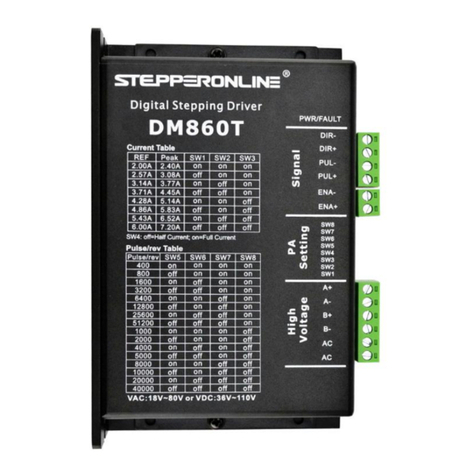
StepperOnline
StepperOnline DM860T User manual

StepperOnline
StepperOnline DMT556T User manual
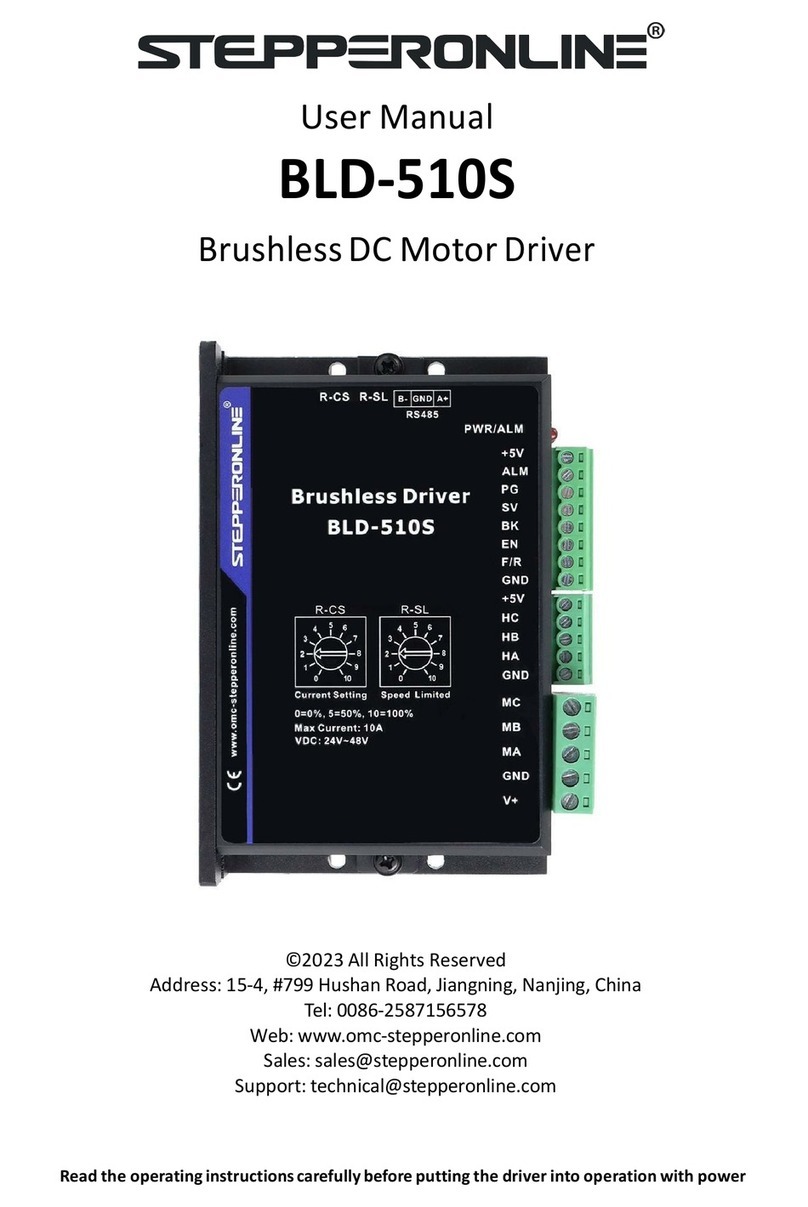
StepperOnline
StepperOnline BLD-510S User manual

StepperOnline
StepperOnline DM860N User manual
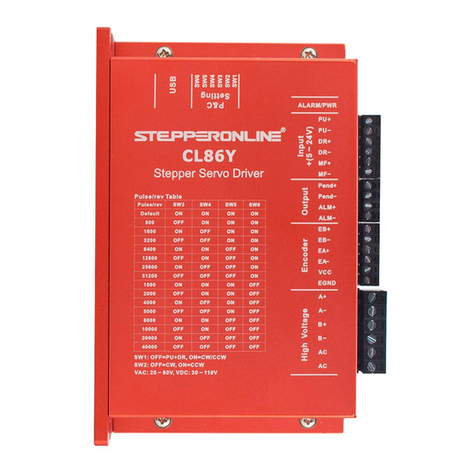
StepperOnline
StepperOnline Y Series User manual

StepperOnline
StepperOnline BLD-530S User manual
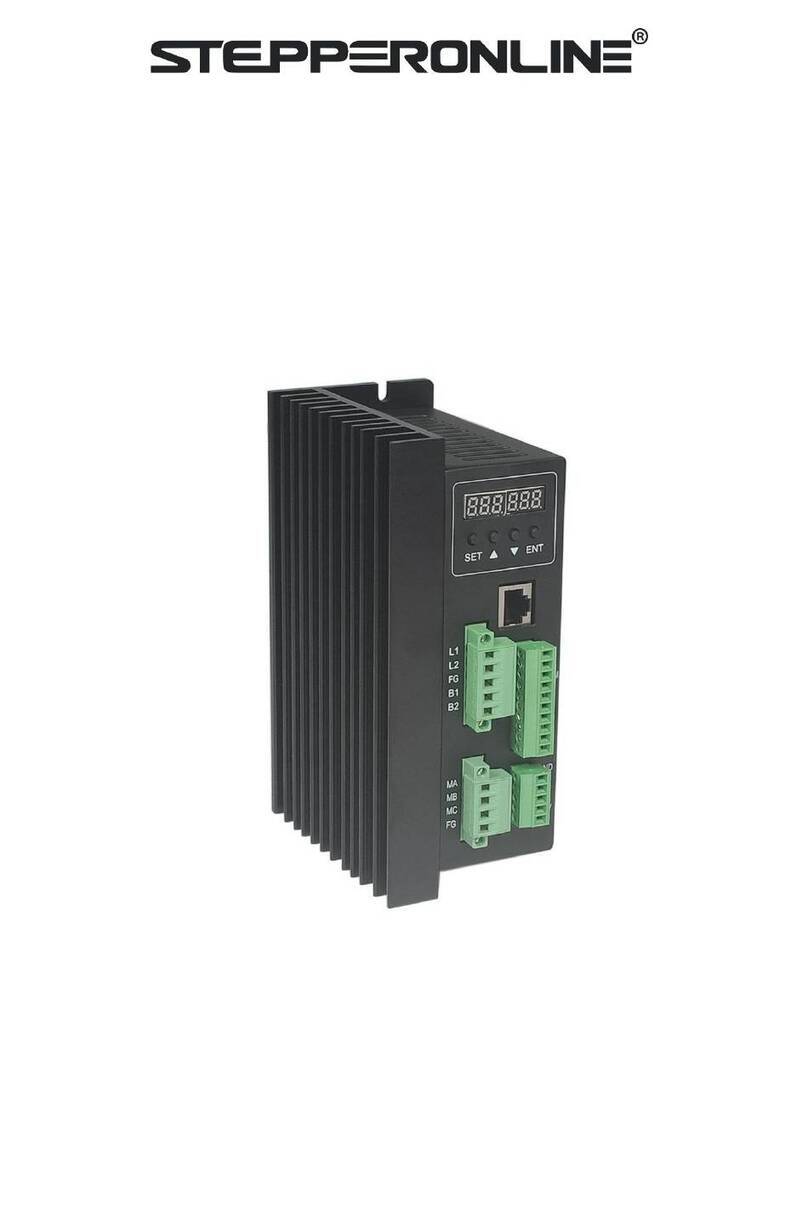
StepperOnline
StepperOnline BLD-AC750S User manual
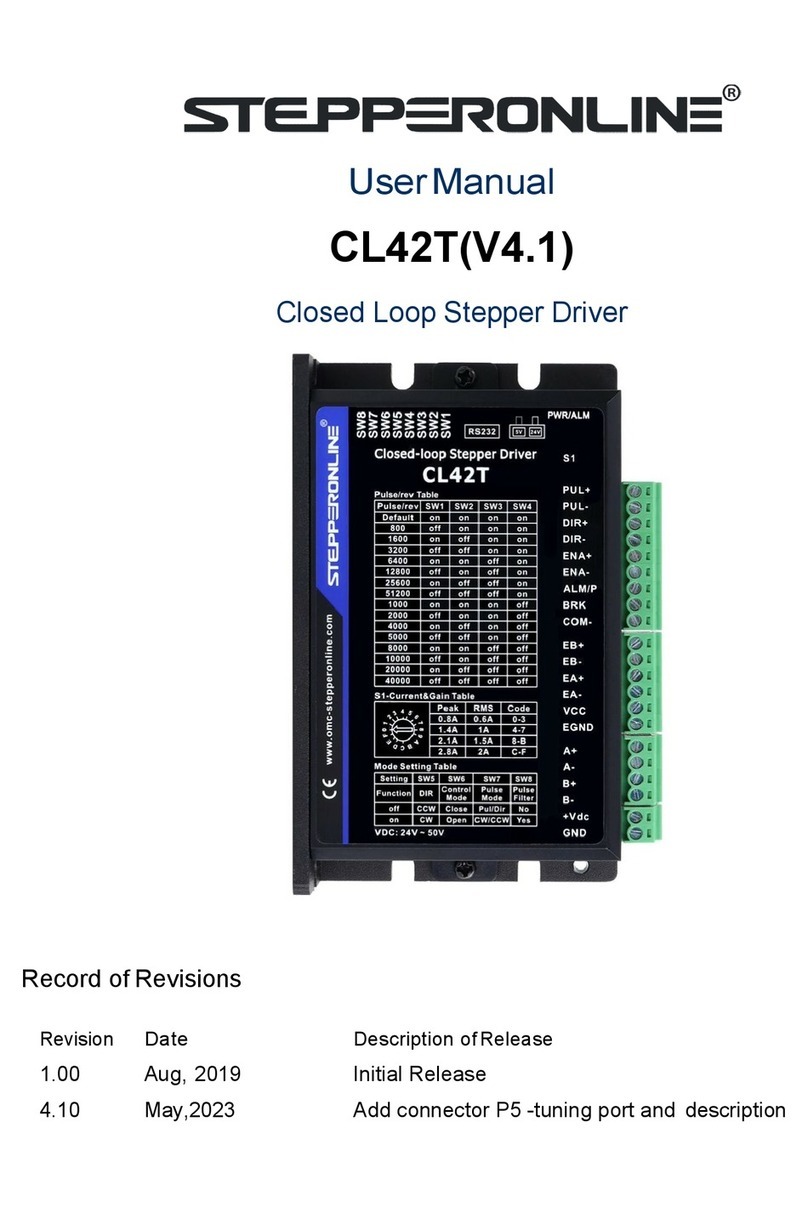
StepperOnline
StepperOnline CL42T User manual
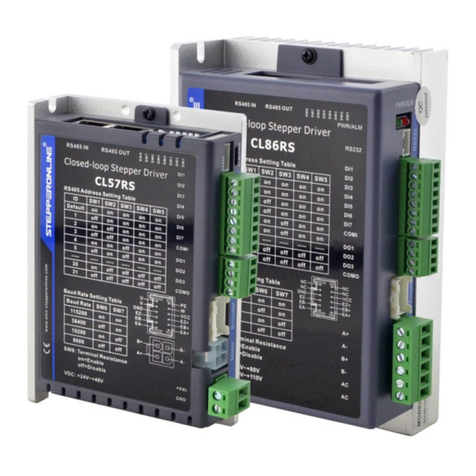
StepperOnline
StepperOnline CLRS Series User manual
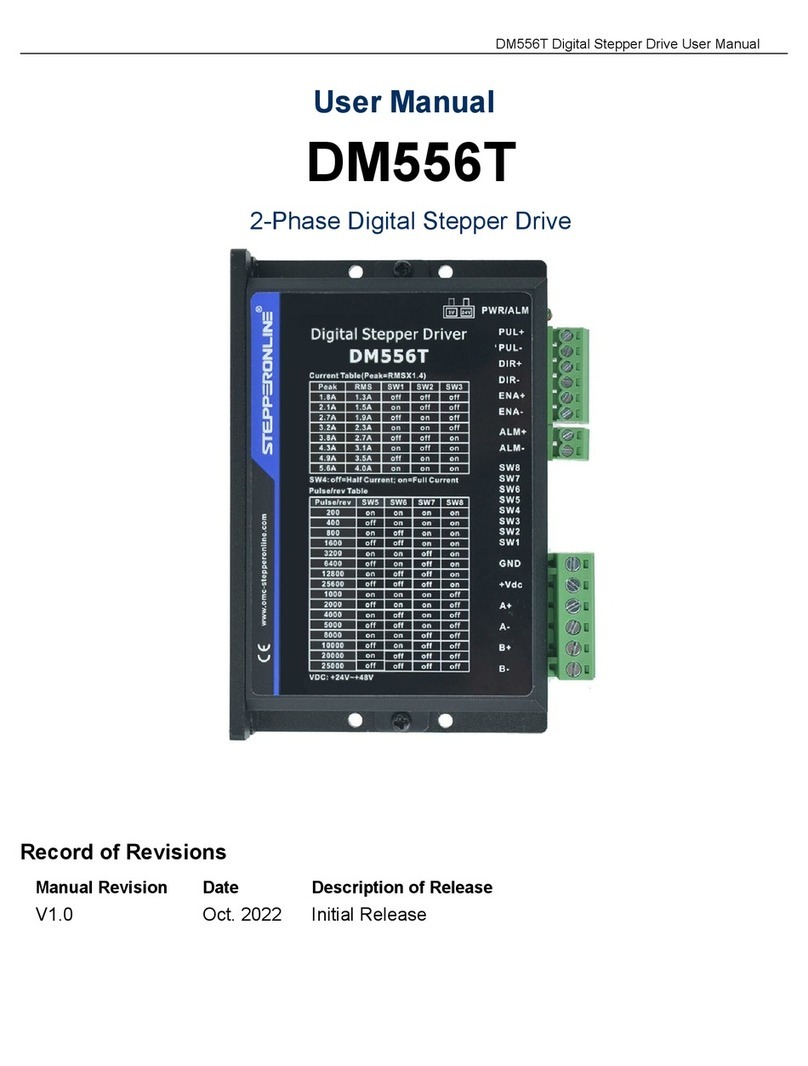
StepperOnline
StepperOnline DM556T User manual

